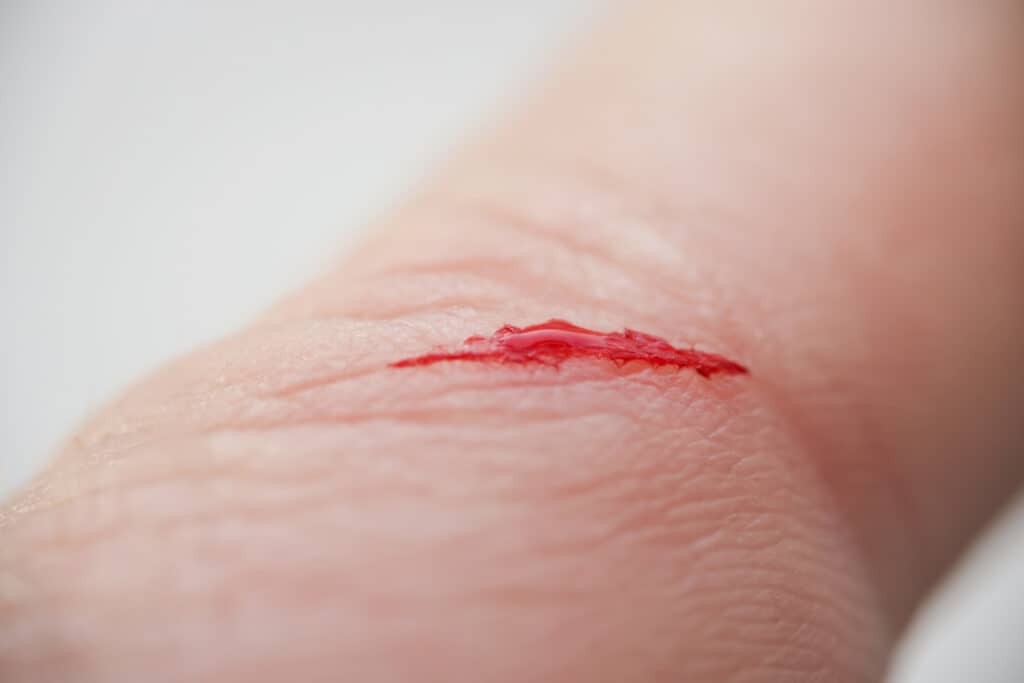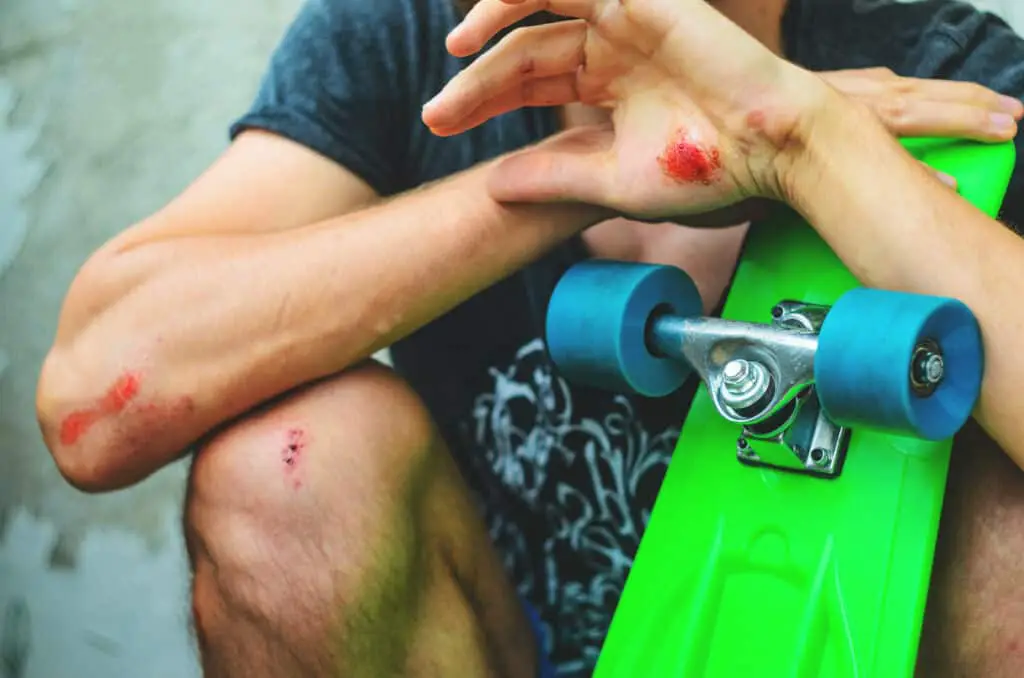Surfing, like any sport, carries a risk of injury. In this article, I will discuss the most common surfing injuries, their locations, and how to prevent them. I will also answer several frequently asked questions.
What are the most common injuries in surfing
Surfers most commonly sustain skin injuries, which account for nearly half of all surfing injuries. Skin injuries can include lacerations, burns, hematomas (bruises), or contusions (direct blows). 1

There are a number of ways to sustain a skin injury while surfing. The fins on surfboards are quite sharp, and the noses and tails of some boards can also be sharp. These sharp edges can cause lacerations or piercing injuries.
Here are some specific examples of how skin injuries can occur while surfing:
- A surfer can be cut by the fin of their own board during wipeout.
- A surfer can be cut by the fin of another surfer’s board if they collide.
- A surfer can be cut by the reef if they fall on it or if their board hits it.
Other Examples of skin injury/damage include: sunburn and skin rash from waxed surfboard
Soft tissue injuries are the next most common type of surfing injury, accounting for about 20% of all injuries. These injuries can include muscle cramps, tendonitis, and bursitis. Soft tissue injuries can be caused by overuse, improper technique, or sudden movements.
Bone injuries are less common than soft tissue injuries, but they can be more serious. Bone injuries account for about 10% of all surfing injuries and can include joint sprains, dislocations, subluxations, cartilage damage, and fractures. Bone injuries can be caused by falls, collisions with other surfers or objects, or landing awkwardly on the board.
How Does injury occur?
The most common cause of surfing injuries is being hit by your own surfboard. This accounts for close to 40% of all surfing injuries (McArthur 2020). This is understandable, as your surfboard is the closest thing to you when you’re surfing and it’s also quite hard.
The following prevalent cause of injury stems from encounters with waves or during the execution of a maneuver. It’s improbable that the injury arises directly from the waves themselves, but rather from mistimed maneuvers on a wave, leading to potential harm.
It’s intriguing that injuries caused by another person’s board are relatively uncommon, especially considering the congestion at certain surf spots. Nevertheless, this might be underreported compared to the actual frequency of occurrences.
Where does the most injury occur?
The injuries most frequently occur in the head, neck, and face, comprising approximately one-third of all cases. (McArthur 2020)
Following closely are lower limb injuries, accounting for another one-third of total injuries. Upper limb injuries make up around 16-17 percent of the total.
Given this knowledge, what steps can we take to address it?
How to Prevent Injuries in Surfing
To avoid skin injury
- Apply waterproof sunscreen, preferably with a mix of zinc-based, to provide both physical and chemical protection.
- Wear wetsuits to add an extra layer of defence against cuts from fins and surfboards, as well as to guard against rash. Note that waxed surfboards can be irritating, and a rashguard might not offer sufficient protection.
- If you’re surfing at reef breaks, it’s advisable to wear boots or reef shoes for added foot protection.
- During wipeouts, shield your head, neck, and face with your arms, as these areas are most susceptible to injury. This will help prevent your board from making direct contact.
- Opt for softer equipment like soft-top surfboards or protective surfboard fins.
- Consider wearing a specially designed surfers’ helmet, especially in heavily crowded spots. This can be particularly beneficial for children who are starting out in such environments, as they are more prone to concussion injuries compared to adults.
To avoid overuse Muscle injury
- Take it at your own pace. Building muscle strength and endurance requires time. Therefore, incorporate rest days into your surfing routine to allow for proper recovery.
- Focus on refining your technique. Paddling is a crucial aspect of surfing. Having an efficient paddle technique can significantly enhance your performance. For tips on how to improve your paddling, check out this resource.
What are the most severe injuries in surfing?
While uncommon, the most extreme outcome of surfing is death, often resulting from drowning. For information on the causes of drowning and preventive measures, kindly click here.
Another infrequent yet grave injury to consider is a spinal cord injury. This type of injury may happen if a surfer strikes a shallow bank or reef with their head. In such cases, the neck tends to be more flexible in comparison to the head and torso.
Hence, in such situations, the neck may be compelled in a certain direction, potentially leading to a break when subjected to sufficient force. The spinal cord is housed within the neck bone, and a fractured neck can lead to damage to the spinal cord.
How often does the injury occur in surfing?
The typical injury rate falls between 0.74 to 1.79 injuries per 1000 hours of surfing. To put it differently, if an individual surfs for 2 hours daily, they are likely to sustain an injury approximately every 500 days(McArthur 2020).
Comparatively, surfing boasts a lower injury rate compared to other sports. For instance, skateboarding registers an injury rate of 12.8 per 1000 hours of exposure, while soccer ranges from 4 to 30 injuries per 1000 hours of exposure.

There’s an argument that individuals may be less inclined to report minor injuries while surfing. However, this tendency could be observed in various other sports as well.
Overuse injuries in surfing are infrequent. The primary body part in constant use is the shoulder for paddling. Unlike in swimming, surfers don’t continuously paddle throughout the entire session. They typically paddle out to clear the impact zone and then find a spot to wait for waves. As a result, overuse injuries are generally less common among surfers.
- Katherine McArthur. SPORTS 2020. Epidemiology of Acute Injuries in Surfing: Type, Location, Mechanism, Severity, and Incidence: A Systematic Review ↩︎

